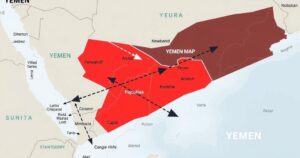Severe Earthquake Hits Caribbean: Tsunami Alerts and Public Response

On February 8, 2025, a 7.6 magnitude earthquake struck the Caribbean, prompting tsunami warnings in multiple regions, including Cuba and the Cayman Islands. Although initial fears of significant damage were alleviated as most warnings were lifted, experts stress the need for improved disaster readiness due to the Caribbean’s seismic vulnerability. Officials continue to monitor the situation closely.
On February 8, 2025, a powerful 7.6 magnitude earthquake struck the western Caribbean Sea at approximately 6:23 p.m. local time. The epicenter was located roughly 130 miles south-ssouthwest of George Town in the Cayman Islands at a depth of 10 kilometers. This seismic event triggered immediate tsunami warnings across several nations, including Cuba, Honduras, the Cayman Islands, Puerto Rico, and the U.S. Virgin Islands, prompting authorities to advise coastal residents to evacuate to higher ground.
In the wake of the tremor, the U.S. Tsunami Warning Center predicted potential wave heights of up to 3 meters for Cuba, with smaller surges forecast for Honduras and the Cayman Islands. Although the situation raised initial concerns about possible destruction, subsequent assessments indicated that most tsunami warnings could be lifted, apart from certain areas experiencing residual alerts. So far, officials have reported no significant damages or casualties, but they remain vigilant to monitor any delayed effects.
The Caribbean region is highly susceptible to seismic activity due to the convergence of the North American and Caribbean tectonic plates. The area around the Cayman Islands, particularly the Cayman Trough, has a history of significant earthquakes. This recent occurrence underscores the importance of disaster preparedness in this vulnerable region, reminding residents and officials of their ongoing challenges related to natural disasters.
Following the quake, many residents and tourists shared their experiences through social media, depicting swaying buildings and the sound of emergency sirens. Authorities have urged the public to maintain vigilance by preparing emergency kits and clear evacuation plans for future seismic events. Continued preparedness is essential as aftershocks may still occur in the region.
Moving forward, officials will persist in monitoring seismic activity in the Caribbean. Although most tsunami warnings have been rescinded, experts reiterate the necessity for ongoing surveillance and improvement in earthquake preparedness strategies throughout the region. It is crucial for residents to stay informed by consulting official sources such as the U.S. Tsunami Warning Center and local emergency management agencies.
The Caribbean is a region that frequently experiences earthquakes due to the complex interactions between its tectonic plates. The most notable fault line is the Cayman Trough, which is known for generating significant seismic events. Understanding the geological background helps in appreciating the repeated seismic threats faced by this area and emphasizes the need for enhanced disaster preparedness initiatives to protect its inhabitants.
In conclusion, the recent 7.6 magnitude earthquake serves as a critical reminder of the seismic risks faced by the Caribbean region. While immediate tsunami threats were largely mitigated and no severe damage was reported, the event highlights the importance of readiness and public awareness. Authorities and residents alike must prioritize preparedness to safeguard lives against future natural disasters.
Original Source: themusicessentials.com








